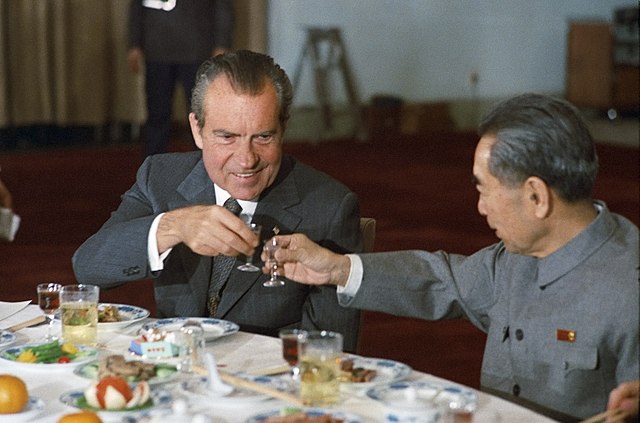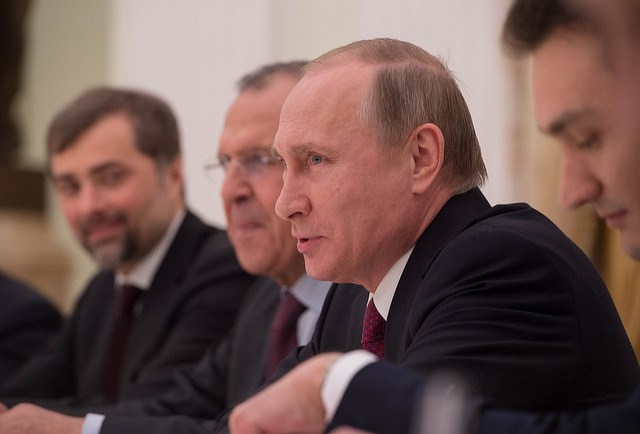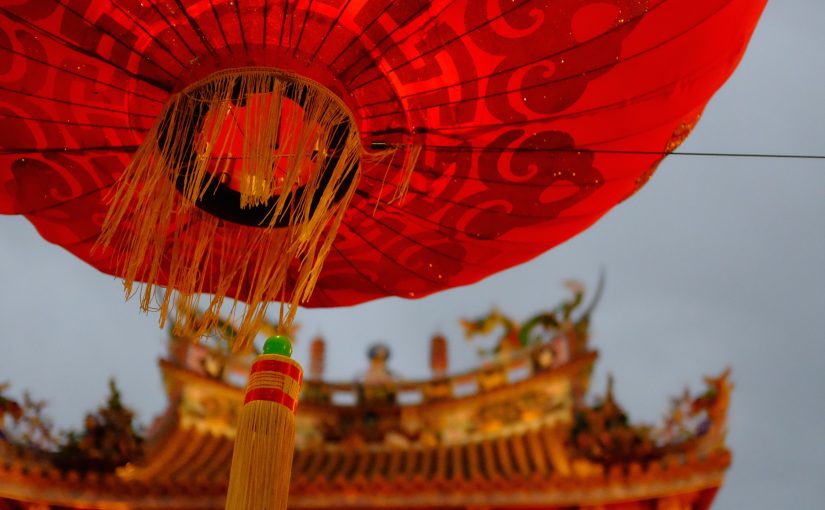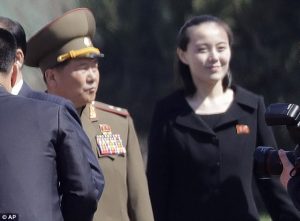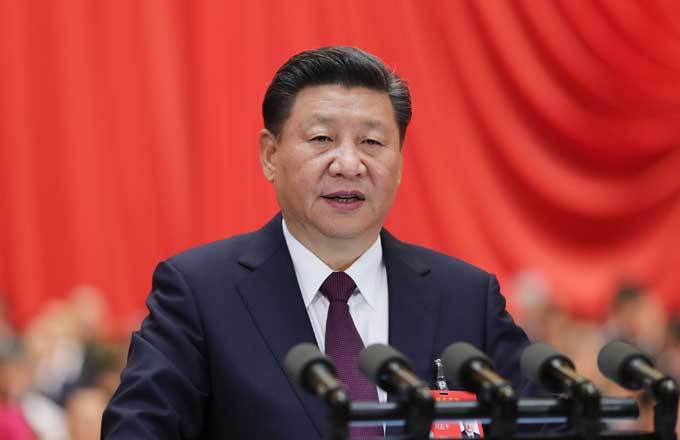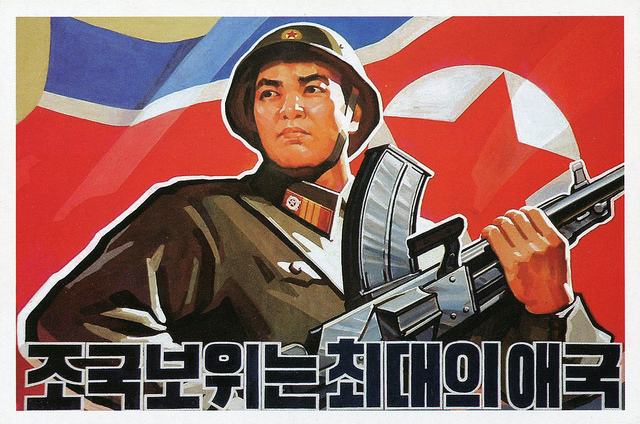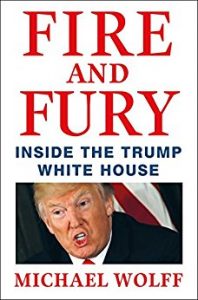by David Parmer / Tokyo
The 19th National Congress of The Communist Party of China was held from 18-24 October 2017 in the Great Hall of The People in Beijing. Thousands of delegates from all over the country descended on China’s capital to participate in the CPC’s most important event, its 5-year meeting, to assess its performance in the past 5 years and to set out a strategy and vision for the next 5 years.
This meeting’s keynote was a report delivered on behalf of the 18th Congress of the Communist Party of China by the General Secretary of the Communist Party of China and President of the People’s Republic of China, Xi Jinping. The speech gave a detailed summary of both past performance and future vision.
Prior to the convening of the meeting, speculation was rife in the world media about what would take place during the 5 days of the meeting, who would move up and who would move down or out. Much talk centered about Mr.Xi’s allies being in the ascendency.
Many analysts commented on Mr. Xi’s consolidation of power and many noted that he was now the most powerful leader in China since Mao Zedong himself. Some wondered if a “cult of personality” would arise around him, and one commentator went so far as to claim that this event was the “coronation of Emperor Xi.” (Time, 24 October 2017 / online edition).
Ignoring this type of speculation, the question then is why has Mr. Xi been so focused on consolidating power, fighting corruption, retiring old cadres and promoting young and capable cadres and reforming the military?
The answer is rather straightforward, and that he is determined to do as much as possible in his time in office to make his vision of the China Dream and the rejuvenation of the nation a reality.
The theme of the Congress is: Remain true to our original aspiration and keep our mission firmly in mind, hold high the banner of socialism with Chinese characteristics, secure a decisive victory in building a moderately prosperous society in all respects, strive for the great success of socialism with Chinese characteristics for a new era, and work tirelessly to realize the Chinese Dream of national rejuvenation (Preamble to Mr. Xi’s report)
As was pointed out by several commentators after the event, Mr. Xi’s vision of the future while containing important points dealing with the rest of the world and China’s relation to it, is really focused internally.
As first glance the achievement of a “moderately prosperous society” would seem to be a key element is his vision, but on closer examination, the completion of national rejuvenation seems to be the real “true North” at which all of China’s compass needles must point according to Mr. Xi’s vision of a greater China.
In this paper we will start by taking a brief look at some of the key points in Mr. Xi’s report to the19th Congress that are central to his vision for a future China up to the middle of this century and beyond.
In the second section we will use a powerful and effective marketing tool or template to examine the challenges and opportunities that face Mr. Xi, the Party, and China itself.
The marketing tool is called a PEST analysis, with the letters standing for Political, Economic, Social, and Technological. Typically, company management at the highest levels uses this tool to plan their long-terms strategy, especially in the field of marketing. PEST analysis shows how the prevailing factors are for or against the organization’s plans.
In the October Mr. Xi has laid out his grand plan for China in front of the 19th Congress of the CPC. The purpose here is not to attempt to suggest whether Mr. Xi’s plan will “succeed” or “fail,” but rather what factors will affect it. We will use the PEST analysis to see where he might be faced with a restraining headwind, or a favorable tailwind, or both at the same time.
Section One – Xi Jinping’s Vision for China
Mr. Xi’s vision for a moderately prosperous society employing Socialism with Chinese Characteristics to create a New Era.
In Mr. Xi’s report to the 19th Congress consisting of 32,000 characters and lasting for some 3 hours, Mr. Xi first pointed out where progress had been made in the past 5 years. He and then set out his grand vision for China to 2035, 2050 and beyond. These grand goals included:
- The creation of a moderately prosperous society
- The continuation of reform and opening up
- The creation of a world-class military that is fully capable
- The emergence of China as a global leader
- The maintenance of “one country, two systems” and the 1992 consensus
- The continued fight against, and elimination of corruption
- The creation of a “green China” that opposes global warming
- The elimination of poverty by 2020
- The completion of national rejuvenation
A short explanation of each section in Mr. Xi’s own words from his report to the 19th Party Congress:
(A) The creation of a moderately prosperous society
Building on this, our Party then developed the vision that by the time we celebrate our centenary, we will have developed our society into a moderately prosperous one with a stronger economy, greater democracy, more advanced science and education, thriving culture, greater social harmony, and a better quality of life.
(B) The continuation of reform and opening up
We should pursue the Belt and Road Initiative as a priority, give equal emphasis to “bringing in” and “going global, follow the principle of achieving shared growth through discussion and collaboration, and increase openness and cooperation in building innovation capacity. With these efforts, we hope to make new ground in opening China further through links running eastward and westward, across land and over sea.
(C) The creation of a world-class military that is fully capable
We must fully implement the Party’s thinking on strengthening the military for the new era and the military strategy for new conditions, build a powerful and modernized army, navy, air force, rocket force, and strategic support force, develop strong and efficient joint operations commanding institutions for theater commands, and create a modern combat system with distinctive Chinese characteristics
(D) The emergence of China as a world leader
We will pursue open, innovative, and inclusive development that benefits everyone; boost cross-cultural exchanges characterized by harmony within diversity, inclusiveness, and mutual learning; and cultivate ecosystems based on respect for nature and green development.
(E) The maintenance of “one country, two systems” and the 1992 consensus
We have fully and faithfully implemented the principle of “one country, two systems,” and ensured that the central government exercises its overall jurisdiction over Hong Kong and Macao as mandated by China’s Constitution and the basic laws of the two special administrative regions.
We have upheld the one-China principle and the 1992 Consensus, promoted the peaceful development of cross-Straits relations, strengthened cross-Straits economic and cultural exchanges and cooperation, and held a historic meeting between the leaders of the two sides
(F) The continued fight against, and elimination of corruption
The people resent corruption most; and corruption is the greatest threat our Party faces. We must have the resolve and tenacity to persevere in the never-ending fight against corruption. Only by intensifying efforts to address both the symptoms and root causes of corruption—by making sure that officials are honest, government is clean, and political affairs are handled with integrity—can we avoid history’s cycle of rise and fall and ensure the long-term stability of the Party and the country.
(G) The creation of a “green China” that opposes global warming
We have devoted serious energy to ecological conservation. As a result, the entire Party and the whole country have become more purposeful and active in pursuing green development, and there has been a clear shift away from the tendency to neglect ecological and environmental protection
(H) The elimination of poverty by 2020
We must ensure that by the year 2020, all rural residents living below the current poverty line have been lifted out of poverty, and poverty is eliminated in all poor counties and regions. Poverty alleviation should reach those who truly need it and deliver genuine outcomes.
(I) The completion of national rejuvenation
National rejuvenation has been the greatest dream of the Chinese people since modern times began. At its founding, the Communist Party of China made realizing Communism its highest ideal and its ultimate goal, and shouldered the historic mission of national rejuvenation
Section Two – PEST Analysis of Mr. Xi’s Vision
Mr. Xi’s report contains a myriad of issues and challenges, however the above sections can be considered as the key points of his vision. The next task will be to take a look at these points and see what forces will support or oppose their realization.
POLITICAL FACTORS
Favorable Conditions
From a political standpoint, Mr. Xi has been working on his agenda for the past 5 years. The 19th Party Congress saw a group of new leaders step forward and take their places in the Politburo Standing Committee, and this might be considered the culmination of the beginning of the full implementation of the China Dream. Mr. Xi now has the support he needs for the ambitious agenda he has outlined, and which was foreshadowed in the achievements of his first 5 years including:
- The launch of the Asian Infrastructure Investment Bank
- The Belt and Road imitative
- The ongoing modernization of the PLA
- The ongoing and vigorous fight against corruption
Few observers fail to comment on the accumulation of power that has taken place in the first 5 years of the Xi administration. However most commentators seem to view this accumulation of power as a matter of personal ambition on Mr. Xi’s part, and not as the basis for his drive to accomplish the goals outlined above.
Unfavorable Conditions
- Tibet nationalism
- Uighur nationalism
- Hong Kong activism
- Taiwan Independence activism
- The rise of India to world-power status
- The continued but diminished US Asian influence
While China is in effect a one-party system, the CPC is not without its opposition. The first of these would be minority opposition in the form of Tibetan and Uighur nationalism. Neither of these problems looks like it will diminish soon. The second form of opposition to the CPC comes in the form of activists in Hong Kong and independence activists in Taiwan. On the latter Mr. Xi has made his policies clear; that China will continue to support the “one country, two systems” policy, and will abide by the 1992 Consensus on Taiwan and the Taiwan Strait. While progress toward a moderately prosperous society with Socialist characteristics will move forward, it will do so in spite of these adverse internal currents.
Internationally, China faces most of the same challenges as the majority of the other countries in the world face, i.e. the threat of terrorism, the march of global warming, and the ever-changing, inter-related global economy.
China also faces some thorny issues with its neighbors. From the Chinese perspective, China is only trying to secure its borders as one facet of national rejuvenation as propounded by President Xi. Moreover, China feels it has given repeated assurances that it does not seek hegemony in the region. However, from the perspective of China’s neighbors, with whom she is in dispute (Japan, Vietnam, Philippines) in the East China Sea and South China Sea, China looms large and is a real threat to their territorial sovereignty.
Two other major political challenges threatening China’s realization of the China dream take the form of its neighbor India and its cross-Pacific rival, the Untied States.
India today could be described, as China once was, i.e. as “a sleeping giant.” India has many, many of its own challenges to overcome until it becomes a moderately prosperous society. With the growth of its economy, infrastructure and military power India will surely become one of China’s main rivals.
Border disputes have flared up over the last 50 years, and will probably continue to do so. From a certain point of view India has suffered repeated humiliations in these confrontations and has had to repeatedly back down or settle for a stalemate at best where the Chinese side held all the cards. When a resurgent India has some real military muscle, it will be another question as to whether India will back down again.
As for the sea, if it can be said that the East and South China seas are a Chinese lake, then all signs point to the potential that the Indian Ocean will become an Indian pond in the not-so-distant future.
Chinese shipping from the Gulf transits the Indian Ocean and enters the Strait of Malacca in Indian-influenced waters. India has already stepped up its patrol and base building in order to cover this vital transit point. Submarine activity is increasing through the East Asian region and the Indian Ocean is no exception.
Nor can China fail to factor in its trans-Pacific rival, the United States in its plans for the future. The United States, somewhat diminished is still the most militarily powerful nation on the planet with the ability to project power anywhere in a timely manner. Moreover, the US has honed its military edge for 16 years fighting wars in Iraq and Afghanistan and supporting counter-terrorism from the Arctic to Africa with its cooperation and training missions.
The United States Navy while it is currently having operating problems is still the mightiest naval force in the world with 19 aircraft carriers to China’s 2
The US has ships, bases and allies in the Asia-Pacific, and there is no indication that this will change its Asia-Pacific strategy in the foreseeable future despite a policy of looking inward and pulling back which seems to be the worldview of the Trump administration. China will have to pursue the China Dream in this century and beyond with its American rival still in place and still strong.
Economic Factors
Favorable Conditions
“China has entered a new normal in economic development.”
In his opening remarks to the 19th CPC Congress, Mr. Xi outlined the measures taken and challenges ahead for China to move to a “moderately prosperous society.” These include:
- Promotion of further Internet integration
- Promotion of new area of growth
- Supporting additional industries in upgrading
- Improving the supply chain
- Encouraging entrepreneurship
- Cutting excess capacity and cut cost
- Vigorously continuing to promote opening up
- Continuing and expand Belt and Road Initiative
- Opening China’s western regions
- Empowering free trade zones
- Making China a country of innovators
- Pursuing rural revitalization
- Fostering regional development
Mr. Xi’s “new normal” aims to take China from an economy of fast growth to high-quality development. In the past 5 years a lot of groundwork has ben laid to make this happen, and to make the development goals listed above a reality.
Internationally, as the US retreats, China steps forward. China’s Belt and Road plan already has several parts in place and is moving forward. As with the Asian Infrastructure Investment Bank, China is and will continue to get wide support for it visionary approach to its own and the regional and global economy.
China will end the calendar year of 2017 with some good news for its economy; her GDP is expected to come in at 6.8%, a figure higher than targeted. This has exceeded expectations and marked a 7-year high. GDP is estimated at 6.4% for 2018, but the numbers could also be higher in December 2018.
Unfavorable Conditions
Economically, China has some strong headwinds blowing against her as she moves forward. Many of the issues were addressed by Mr. Xi in his opening address, however simply acknowledging and addressing them does not means they are solved.
One of the major problems is China’s increasing debt. It has been reported that debt stands at 234% of GDP. In 2017, Standard & Poor’s downgraded China’s credit rating to A+ because of debt and financial risk.
Other challenges for China are problematic state intervention in the economy, low productivity of State Owned Enterprises (SOE) and continued support of loss-making companies. China also needs to do more to control soaring housing prices. The IMF suggests that China must also speed up reforms and boost consumption. Right now there is a situation of high national savings and low consumption.
It is not all bad news for the giant Chinese economy, but Mr. Xi and his government have their work cut out for them when it comes to the economy moving forward in the next 5 years and beyond.
Social Factors
Favorable Conditions
In a normal PEST analysis, the “S” or social component would probably have equal importance with the other three factors. In this study of Xi Jinping’s speech to the 19th Party Congress, however, the social factor is really the most important. This is because while the speech addresses China’s external interests and concerns, it is primarily focused on domestic matters, i.e. creating the Xiaokang, or moderately prosperous society and national rejuvenation.
Mr. Xi’s speech is really about what has been done, and what must be done by all members of the CPC and the Chinese nation. Some of the things that have been done, and must continue to be done include:
- Maintaining a medium-growth economy
- Building infrastructure to include highways, ports and airports
- Continuing to increase the number of legal migrants to cities
- Continuing to promote democracy and rule of law
- Improving social security for urban and rural people
- Continuing to build an ecological society
- Eliminating poverty and eliminating rural-urban imbalance
The next big target is 2020 with the finishing of the building of a moderately prosperous society and the elimination of poverty. The next phase is from 2020-2035, and the final phase is from 2035-2050 when the socialist modernization of the nation will have been realized. This will complete the rejuvenation of the nation.
Mr. Xi offers planning for the road ahead and calls for all to cooperate in the building and realization of the China Dream.
Unfavorable Factors
The realization of the China Dream is on track and moving forward, but that does not mean that it will not meet adverse conditions before the 2050 target for completion.
Domestically the CPC party center could face opposition from Tibetan and Uighur nationalism. These two ethnic groups must be dealt with properly to prevent both an increased sense of separatism and terrorism. Beijing’s response must be both firm and fair, and these (and other) minorities must feel a sense of inclusion in the Chinese nation and Chinese dream. Hong Kong and Taiwan are also problematic for the central government.
Thus far, Beijing has dealt with Hong Kong skillfully in the 20 years since the former British colony has reverted to Chinese control. Mr. Xi in his speech has reiterated the Party’s commitment to the “one country, two systems” arrangement. The worst-case scenario is a robust opposition movement that would cross some undefined “red line” and ultimately force Beijing’s hand. The best-case scenario is the passage of time where a new generation of young people has a different “China consciousness” and loyalty to greater China.
As for Taiwan, Mr. Xi also reiterated the Party’s commitment to the “1992 Consensus” affirming the one-China policy. He also stated unequivocally that not “Taiwan Independence” movement would be tolerated. The problem with Taiwan is that while the possibility of a growing “China consciousness” is possible in Hong Kong as a solution, it does seem not possible with Taiwan. Polls have repeatedly shown that Taiwan people more and more see themselves as Taiwanese and not Chinese. At present, there seems to be only two solutions to the Taiwan question: toleration or takeover. No third solution is currently on the table. So Taiwan will remain one piece missing from the mosaic of “rejuvenation of the nation.” Until it is “solved” it will be a problem for China and an “incomplete.”
International factors that could slow down the realization of Mr. Xi’s great blueprint would include tensions or open conflict with China’s Russian and Indian neighbors. Also to be considered would be the possibility of unwanted conflict with China’s maritime neighbors including Japan, Viet Nam, the Philippines and the United States. War on the Korean peninsula would also certainly cause a re-thinking of the great timeline forward.
While the above considerations would not derail the China Dream, they could slow it down considerably and force the CPC to adjust its timelines for 2020, 2035 and 2050.
Technological Factors
Favorable Conditions
Probably the greatest impetus for the development of Chinese technology is not scientific but a commitment to national rejuvenation. In his speech Xi Jinping mentions the Opium War of 1840 which began a century of national humiliation for China. China was poorly armed and no match for the premier military of its day, the British army and navy. China’s complacency in the 18th century left it vulnerable to European powers that had embraced the Industrial Revolution. China had a long, uphill battle to modernize. After 1949 China had not only to reconstruct but also to start to build a livable society.
Both Deng Xiaoping and Zhou Enliai fully understood that it was science and technology that would move China forward. When Deng went to Japan and saw the technological prowess of the postwar Japanese he was determined to move China forward scientifically and militarily. So began Reform and Opening Up and the development of China’s tech sector. Today China has a robust space program, a space station of its own, a giant program to develop alternative energy, a massive and vibrant Internet infrastructure, and is committed to assuming leadership in the fight against global warming and climate change.
In his speech Mr. Xi states:
Through devoting great energy to implementing the innovation-driven development strategy, we have seen much accomplished toward making China a country of innovators, with major advances made in science and technology, including the successful launch of Tiangong-2 space lab, the commissioning of the deep-sea manned submersible Jiaolong and of the five-hundred-meter aperture spherical telescope (FAST) Tianyan, the launch of the dark matter probe satellite Wukong and the quantum science satellite Mozi, and the test flight of the airliner C919.
Mr. Xi makes it clear that it will be technology that will be the underpinning for the development of Socialism with Chinese Characteristics, the completion of the China Dream and the Chinese national rejuvenation.
Unfavorable Conditions
It is hard to imagine any conditions unfavorable to the development of China technologically. It is unlikely that China will waver in its commitment to excel on the scientific and technological fronts. The target of having basically achieved full development by 2050 will not likely be abandoned. The only real threat would be military conflict with one or several of its potential adversaries or war on the China mainland itself. Either war or planetary disaster seems to be the only forces capable of slowing China’s technological and scientific advance.
CONCLUSION
Using the PEST analysis of Mr. Xi’s speech we can come to a few common conclusions among the sections. We can see that his consolidation of power is not a move towards personal aggrandizement, but rather the next necessary step to the realization of his vision. The strength of Mr. Xi’s plan for a greater China in the 21st century lies in these factors,
- Vision
- Commitment
- Planning
- Implementation
Factors that will militate against the China Dream are as mentioned above,
- Ethnic unrest
- Hong Kong unrest
- The Taiwan question
- Border conflict with neighbors
- Conflict in the East and South China sea
- War on the Korean peninsula
If Mr. Xi’s call is heard by the CPC and supported by the Chinese people, then the China Dream, and a fully realized country featuring Socialism with Chinese characteristics will likely become, despite inevitable setbacks, a reality by 2050.
Photo: Global Times
 日本語
日本語 English
English 中国語
中国語